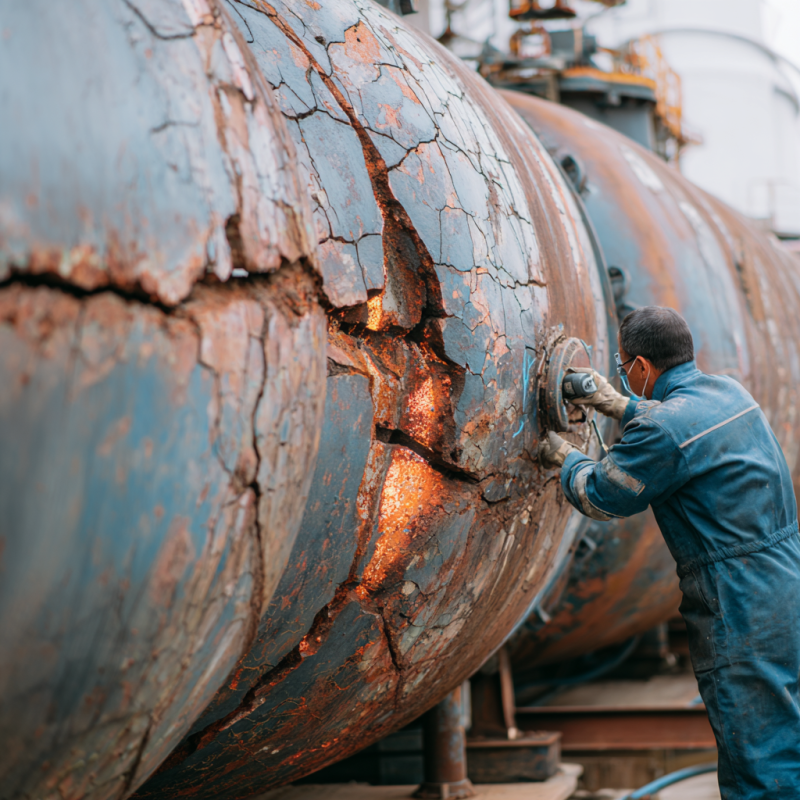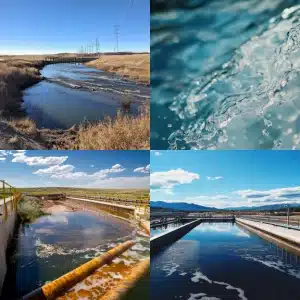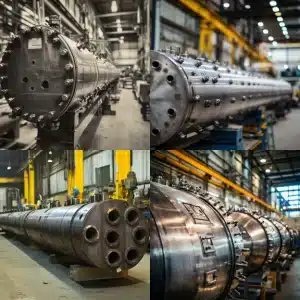
Structural failure analysis for pressure vessels helps identify design flaws, material weaknesses, corrosion, and stress fatigue before they escalate into dangerous breakdowns. By combining inspections, lab testing, simulations, and compliance with ASME/NBBI standards, it ensures safety, reduces downtime, and extends equipment lifespan.
Why Structural Failure Analysis Matters
You may already know that pressure vessels operate under demanding conditions, with high internal pressure, extreme temperatures, or corrosive processes. When these vessels fail, the results can be disruptive and dangerous. Structural failure analysis is the technique you use to foresee and prevent such breakdowns. It probes the integrity, design processes, and potential risk factors that could spark a failure.
According to industry estimates, many pressure vessel challenges stem from missed flaws in the earliest phases of design or production. By applying structural failure analysis, you can highlight weak points before they morph into ruptures or cracks. This practice is especially critical if your vessel is handling hot liquids or gases at elevated pressures, where even a small flaw can escalate. Beyond safety, performing structural failure analysis also supports operational stability and avoids costly downtime.
If you are looking to drill deeper into the root causes of broken equipment, you might explore material failure analysis as a complementary approach. Material failure analysis focuses specifically on the raw materials and how they degrade, while structural failure analysis zooms out to combine design, materials, and operating conditions. For any company working with pressurized systems, it pays to weave both these techniques into a comprehensive strategy.
Key Factors Behind Failures
Understanding the causes behind a pressure vessel collapse helps you target your analysis and protective measures. Good news, this is easier than it sounds once you know where to look. Here are several main contributors:
Material Deficiencies
Sometimes, the steel or alloy fabrics that you use just are not up to the task. Minute flaws from the mill, impurities, or improper heat treatments can weaken a vessel over time. Even though materials commonly go through rigorous checks, subtle imperfections can slip into real-world production. American tank fabrication standards help reduce these risks.
Corrosion
Corrosion is a persistent foe for vessels, particularly when they are exposed to chemicals or harsh environments. Over time, moisture, chemicals, or unstable pH levels degrade the inner walls of your tank or piping. Left unmanaged, corrosive spots eat away the thickness and eventually compromise the structure. Explore more on corrosion-specific evaluations under corrosion failure analysis.
Fatigue from Repeated Stress
Fatigue sets in when metal faces repeated cycles of loading and unloading. At first, cracks might be invisible, but these small fissures can branch out if you don’t catch them. Eventually, the cracks merge into a major fracture. If you suspect repetitive stress to be a factor, consider fatigue failure analysis for a deeper look at why certain welds or seams degrade over time.
Design Flaws
A design that cuts corners omitting adequate shell thickness or ignoring stress concentration points can create vulnerability for your vessel. Even advanced engineering capabilities can occasionally overlook local stresses in complex geometry. During structural failure analysis, you want to simulate and confirm that your vessel meets or exceeds the established safety margins.
Maintenance and Operational Oversights
Regular checkups and thorough cleaning routines will ward off many of the threats above. Issues left unnoticed, from a minor pinhole in the weld to runaway corrosion, can escalate. If you are curious about other common breakdowns, what causes pressure vessel failure offers more details.
Altogether, these factors can intertwine. You might see an initial design shortcoming that is made worse by corrosion, leading to fatigue cracks. By investigating each possibility, you can craft robust defenses that stave off dangerous breakdowns.
Methods of Structural Failure Analysis
When you dive into structural failure analysis, you combine multiple techniques to get a well-rounded view. Some methods scrutinize the vessel from the outside, while others involve more hands-on or computational approaches. Balancing these can reveal both obvious and subtle vulnerabilities.
Nondestructive Evaluation Methods
Nondestructive testing (NDT) encompasses techniques like ultrasonic, radiographic, magnetic particle, and dye-penetrant inspection. These methods search for cracks, voids, or weaknesses without harming the vessel. For instance, ultrasonic tests use sound waves to detect thickness variations or hidden pockets of corrosion. Many plant operators plan routine NDT to catch any problems early and reduce the unplanned outages that come from catastrophic failures.
Laboratory Testing
If you suspect a specific material weakness, you might remove a small sample for lab analysis. Specialists examine the microstructure, chemical composition, or mechanical attributes like hardness or tensile strength. When an issue is discovered maybe a small zone that was overheated during welding this information pinpoints exactly where and why the vessel could fail. Additional testing may confirm whether your entire batch of material is suspect or if a localized flaw caused the problem.
Advanced Simulations
Digital tools, like finite element analysis (FEA), allow you to model stresses within your pressure vessels under various scenarios. You set parameters for temperature, internal pressure, and external forces, then see how the vessel’s geometry and thickness respond. This can be especially helpful for complex designs or large-scale equipment that cannot be easily tested. FEA also allows you to tweak design variables (like shell thickness or shape) to see how structural integrity changes, a powerful way to refine your plans before manufacturing begins.
Integrating Mechanical and Metallurgical Studies
Structural failure often involves more than a single factor. In many cases, mechanical forces (like an overpressure event) work together with metallurgical factors (like a brittle zone in a weld). Combining insights from what is mechanical failure analysis and what is metallurgical failure analysis with a broader structural perspective reveals how these contributory elements lead to a vessel’s final failure. Having a multi-pronged investigative approach ensures no hidden triggers remain ignored.
Evaluating Design and Prefabrication Benefits
You might wonder if your design or assembly process plays a key role in preventing structural failure. The short answer is yes. Prefabrication has become a powerful ally for industries that use modular skids.
Consistency in a Controlled Environment
By assembling large components in a manufacturing facility (instead of out in the field), you reduce the risk of errors or environmental interference. Prefabrication also lets you do more thorough inspections on each piece.
Reduced Exposure Hours
Red River LLC emphasizes that fewer on-site hours mean less risk for your workforce, plus fewer chances for small oversights to creep in. According to Red River LLC, prefabrication processes cut down project timelines and allow for better quality checks before shipment.
Lower Costs
With a streamlined assembly, you can trim redundancies and keep your build on budget. By the time your vessel hits the field, you can feel confident that each weld and fitting has been tested. A safe, uniform approach often translates to a lower overall price tag, since fewer reworks or field modifications are required.
Easier Detection of Conflicts
Prefabrication relies on software for modeling isometrics and piping spools, so you can identify potential collisions or stress concentration points ahead of time. When design conflicts are caught and fixed early, you can reduce the risk of structural flaws.
For comprehensive packages, like entire skids or structures that support your pressure vessel, this approach ties directly into structural failure analysis. By verifying every piece in a shop setting, you enhance both consistency and your odds of staying compliant with industry codes. If you want an overview of the entire process of investigating the root causes behind a structural breakdown, how to perform structural failure analysis offers a step-by-step guide.
Ensuring Compliance with ASME and NBBI Standards
Pressure vessels come under strict regulations for a reason, large amounts of stored energy can pose a serious hazard if released erratically. For that same reason, structural failure analysis often references the American Society of Mechanical Engineers (ASME) guidelines, as well as approvals from the National Board of Boiler and Pressure Vessel Inspectors (NBBI).
Meeting ASME Section VIII
ASME Section VIII sets out comprehensive rules on design, fabrication, inspection, and testing for pressure vessels. By tying your structural failure analysis to these codes, you ensure your vessel is legitimate to operate in many regions. Going above the bare minimum often proves worthwhile, since robust compliance lowers the risk of accidents.
Quality Control Measures
Red River LLC is an example of a manufacturer that uses “total material traceability,” ensuring that each weld, plate, or forging can be tracked. Adding that layer of verification to your structural analysis routines means you can confirm that materials match the intended specs. If something fails in an inspection, you know precisely which part to test or replace.
Inspections by an Authorized Inspector
The National Board’s R Stamp or U4 Stamp signals that a facility is qualified to build or repair pressure vessels. An Authorized Inspector will look at your vessel, confirm that it meets your chosen code, and often monitor any significant repairs. This process pairs well with internal structural failure analysis, forming a double-check system for flaws that might go unnoticed in quick or purely visual reviews.
Continuous Improvement
Beyond compliance, you can keep refining your vessel designs. According to Red River LLC’s approach, applying Lean Six Sigma principles in manufacturing helps you reduce waste, shorten lead times, and maintain higher quality standards. That means fewer production-level failures to investigate down the road.
By routinely building compliance checks into your analysis, you reduce guesswork. You also boost your credibility with clients, regulators, and insurers who expect a reliable vessel that aligns with recognized engineering best practices.
Structural Failure Analysis and Your Next Steps
Keeping your pressure vessels safe isn’t just about meeting a code or passing one inspection. It’s a continuous process, an ongoing partnership between design, materials, maintenance, and operational best practices. Structural failure analysis helps you identify stress hotspots, refine vessel geometry, and apply the right materials for the job. You spot the hairline cracks, evaluate environmental factors, and observe corrosion in its early stages.
Ultimately, investing time in structural failure analysis leads to fewer unplanned shutdowns, fewer large-scale repairs, and a safer environment for your team. If you’re ready to dig deeper, you can check what is structural failure analysis for a high-level definition, or explore pressure vessel failure analysis if you want a broader perspective on how to spot failures early.
When you approach it from all angles, you take control of your operation’s longevity. Let data guide you, let proven codes inform your safeguards, and let your lessons, both from success and slip-ups, keep your vessels stable for the long run.
Partner with Experts in Structural Failure Analysis
Don’t wait for flaws to compromise safety. Red River LLC offers proven expertise in vessel design, prefabrication, and pressure vessel fabrication. Request a quote today to learn how structural failure analysis can extend your equipment’s lifespan and reliability—or contact us directly to discuss your project needs.
Frequently Asked Questions
1. What is structural failure analysis?
Structural failure analysis is the process of investigating why a structure, component, or material failed to perform as intended.
2. How to perform structural failure analysis?
To perform structural failure analysis, experts examine the damaged structure, collect data, test materials, and identify the root cause of the failure.
3. Why is structural failure analysis important?
Structural failure analysis is important because it helps prevent future accidents, improves safety, and guides better design and maintenance practices.
4. What are the differences between structural and mechanical failure analysis?
Structural failure analysis looks at the holistic design and load distribution of a vessel or structure, while mechanical failure analysis dives deeper into the mechanical aspects of components and how they withstand stress. In practice, you often combine both. Check out how to perform mechanical failure analysis if you want to assess pieces like shafts, bearings, or welds more closely.
5. Does prefabrication reduce the risk of structural failure?
Yes. Prefabrication in a controlled shop environment often ensures more precise welds and better quality control compared to building everything on site. It reduces exposure hours, lowers the likelihood of environmental variables causing mistakes, and allows you to catch design conflicts much earlier.
6. Are code stamps like ASME or NBBI mandatory for safety?
In many regions, compliance with ASME or NBBI requirements is legally mandated. Even where not strictly required, these stamps clearly show that your vessel meets widely accepted engineering standards. Most reputable manufacturers and inspectors treat code stamps as essential for risk management and commercial credibility.
Key Takeaway
- A thorough structural failure analysis looks at both the vessel’s design and the material’s capacity to handle stress.
- Regular nondestructive tests, such as ultrasonic or radiographic, help you uncover hidden corrosion or cracks.
- Maintaining compliance (ASME and NBBI standards) improves safety, quality, and long-term reliability.
- Prefabrication can significantly reduce potential errors by shifting much of the assembly process to a controlled environment.
- Integration of mechanical, metallurgical, and structural assessments ensures you don’t overlook any weak links that could undermine your system.




